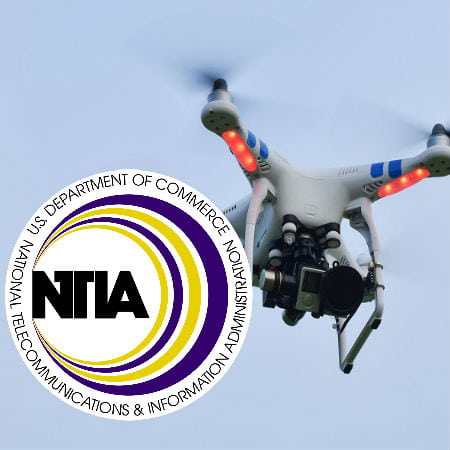
United States agency National Telecommunications and Information Administration released a compendium of voluntary practices that are suitable for commercial and recreational uses of drones amidst recent fears that drones could breach the privacy of individuals and could be used to collect data for commercial purposes in many previously unforeseen ways. Hence, these practices for drone usage are to be used as guidelines by drone users.
Scroll down for video

ReadyGadgets
Guideline Practices for Drone Usage
The drone operators privacy guidelines were defined with cooperation from companies like Alphabet, the parent company of Google, and Amazon. The panel recommends that collectors of personal data who make use of drones should have a privacy policy and should make sure they do not misuse the data collected.
Drone operators are also advised not to use the personal data of individuals for marketing purposes without adequate permission. Personal data should also not be used for promotion, retention or employment eligibility, credit eligibility, or health care treatment eligibility other than when expressly required and permitted by a regulator.
Data collected must not be stored beyond a specific period without permission from the individual or in dire circumstances such as legal or health issues. Drones should not be used in private areas without the consent of the owner of the property or legal consent.
“In the absence of a compelling need to do otherwise or consent of the data subjects, UAS operators should avoid using UAS for the specific purpose of intentionally collecting covered data where the operator knows the data subject has a reasonable expectation of privacy,” according to the guidance released after a meeting of stakeholders.
Pres. Barack Obama instructed the NTIA to develop the guidelines regarding the usage of drones in a memorandum issued previously.

techfrog
The new guidelines are voluntary, and so some drone owners may not adhere to them. The NTIA explains that the guidelines are not an obstruction to the freedom of any individual as explained by the United States constitution. The NTIA also warns that these guidelines should not take precedence over any regulation by the Federal Aviation Administration (FAA) and other regulatory bodies. The FAA and some drone advocacy groups have been expressing their desire that drone regulations among all 50 states of the US should be uniform and not be overruled by the law on drones passed in various states.
The FAA has said that it is planning to finalize rules for the commercial operations of drones by late spring. Draft rules were previously announced which places limit on the height and areas to where drones can fly. They are also banned at night and must be kept in the line of sight of operators.
The best practices for drone usage can help promote Department of Commerce priorities by allowing the drone industry “to grow, develop, and innovate while helping to build consumer trust,” said Secretary of Commerce, Penny Pritzker, in a statement.
Drone and industrial groups have encouraged the recommendations. The Association for Unmanned Vehicle Systems International (AUVSI) has recommended that states and cities should allow commercial operators of drones to adopt the guidelines instead of creating numerous different rules to address the issues of privacy.

Newday
The best practices for drone usage are an example of the progress possible when civil society, government, and businesses work together to find solutions, said Chris Calabrese, vice president of policy at the Center for Democracy and Technology. “Hopefully the broader drone industry and hobbyists alike will embrace these best practices,” he added. In addition, it would also be helpful to use a GPS tracker for monitoring drones’ whereabouts to know whether they are exceeding boundaries or not.
Watch the video below